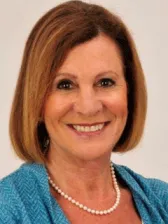While businesses are barred from discriminating against job applicants and employees on the basis of sex, the federal government does give a little edge to businesses owned by women. Under the law, the federal government has a goal of awarding 5% of its contracts to women-owned businesses that have received certification. In fact, in the government's fiscal year ending September 30, 2015, the SBA reported that the government actually awarded 5.05% of prime and subcontracts to women-owned businesses totaling $17.8 billion.
Types of certification
There are two types of set-asides under the federal contract program for women:
- Women-owned small businesses (WOSB). Eligibility is described below.
- Economically disadvantaged women-owned small business. In addition to the basic eligibility for a women-owned small business, one seeking certification for being economically disadvantaged must meet additional requirements.
Self-certification
To achieve the designation of a women-owned small business (WOSB), you must meet certain criteria and complete the certification process online.
Basic eligibility
As a female small business owner, you qualify for certification if:
- Your business is at least 51% owned and controlled by women. This means having direct control (not through another entity) to handle day-to-day management and long-term decision making for the businesses.
- These women owners are U.S. citizens.
- The company is a for-profit business. It can be organized in any form: sole proprietorship, partnership, limited liability company, S corporation, or C corporation.
- The company (nor any of its owners) has been debarred or suspended by any federal entity.
- The company has a place of business in the U.S. or makes a significant contribution to the U.S. economy through the payment of taxes or the use of American products, materials, or labor.
- The company is considered “small” in accordance with its primary North American Industry Classification System (NAICS) code.
- The NAICS code fits with the WOSB Federal Contract Program.
Economically disadvantaged
There are three additional criteria:
- The woman's total assets must be $6 million or less. This is based on the fair market value of her assets, including her home and the business.
- The woman's net worth must be less than $750,000, excluding equity in her home, the ownership interest in the business, funds in an IRA and income from a pass-through entity used to pay taxes arising in the ordinary course of business.
- The woman's personal income must be $350,000 or less. This is the average annual income over the past three years.
Documentation
If you meet the criteria, you can self-certify by providing documentation demonstrating eligibility. These include proof of citizenship, documentation related to your entity, two years of tax returns, stocks, and ledgers.
Third party certification
Instead of self-certifying, you can complete the process through an SBA-approved third party certifier, such as the U.S. Women's Chamber of Commerce (USWCC) and the Women's Business Enterprise National Council (WBENC). These third-parties charge a fee for their services.
Additional steps
As part of the certification process you also need to take care of the following:
DUNS number
This is a number assigned to a business by Dun & Bradstreet. There is no cost for obtaining it and you can do this online* or by telephone at 800-591-8534.
SAM registration
You also need to sign up for the System for Award Management (SAM). This, too, is free.
Conclusion
If you need help, check out the Association of Procurement Technical Assistance Centers (APTAC). Just keep in mind that getting certified is no guarantee you'll be awarded government contracts. It's up to you to pursue contracting opportunities.
*Denotes non-governmental website

